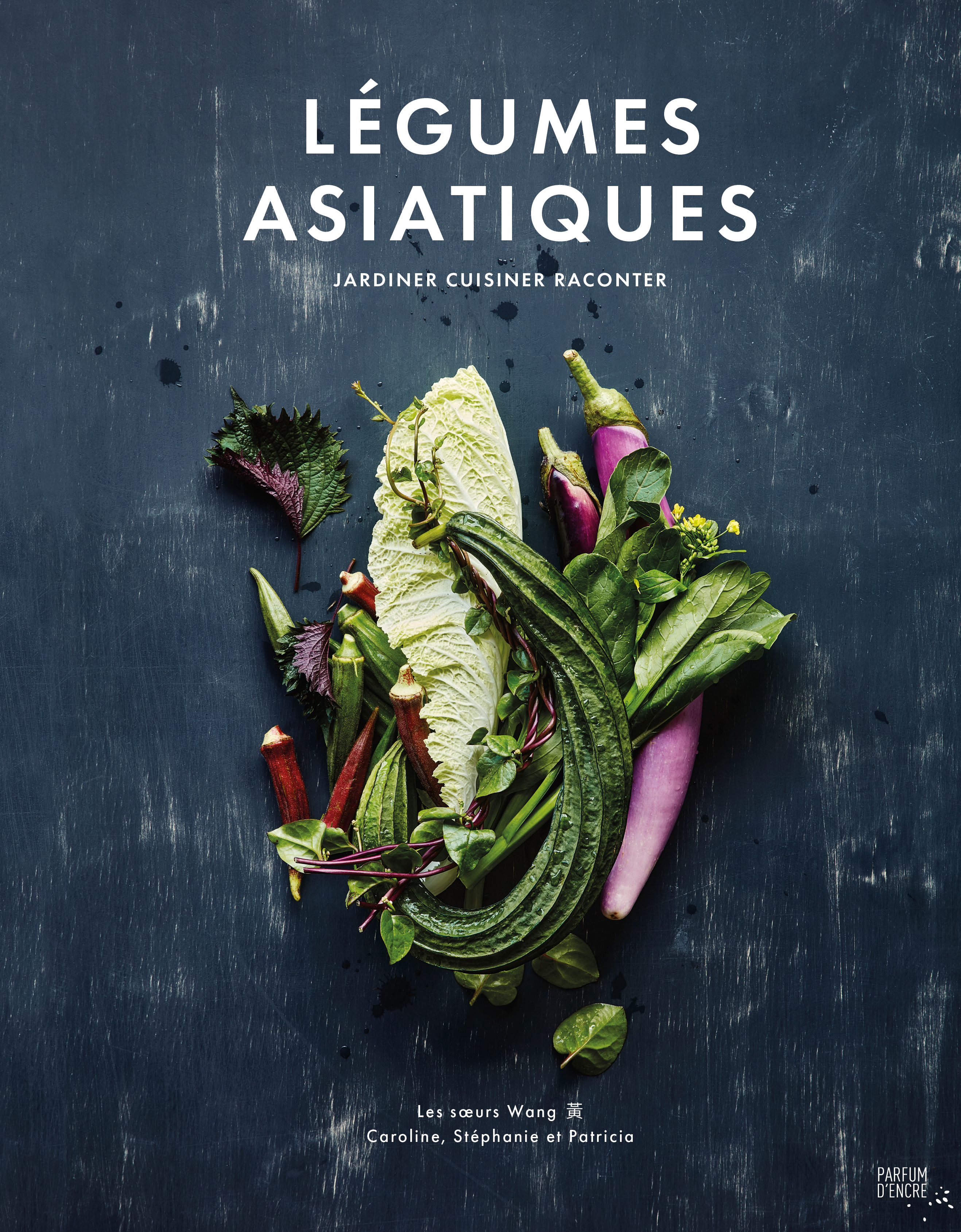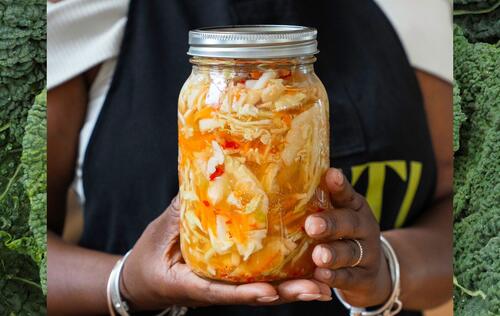Kimchi

Recipe by Jean-Philippe Villemure, taken from the book Légumes asiatiques by Caroline, Stéphanie, and Patricia Ho-Yi Wang, published by Parfum d’encre.
Photo by Virginie Gosselin
An everyday condiment, kimchi is a delicious lacto-fermented food that enhances a variety of dishes. In Korea, it accompanies every meal, even breakfast! Jean-Philippe is a true fan; he couldn't live without his daily dose of kimchi! Here he offers an easy recipe to make at home, which honors the sought-after umami flavor of good Korean kimchi.
Chinese cabbage can be replaced with bok choy, tatsoi, or mustard greens.
Non-iodized salt is preferable for the texture of the brine, but it is not mandatory.
Chinese cabbage kimchi or other brassica kimchi can be stored in the refrigerator for at least 6 months if you follow good practices, such as: limiting contact with air as much as possible, always using clean utensils to serve, and after use, pressing down on the surface of the kimchi with a spoon or spatula so that it is submerged in its juices.
From the day it is made until a year later, kimchi lives and evolves. Some people like it young, while others prefer it mature or aged. In Korea, each stage of kimchi fermentation is associated with a specific culinary use.

Ingredients
- 1 medium Chinese cabbage (about 1.2 kg)
- 30 ml (2 tablespoons) non-iodized salt with no additives (for salting)
- 2 to 3 green onions (or the green part of a small leek) (optional), cut in half lengthwise, then into 6 cm pieces
For the spicy paste
- 3 to 4 cloves of garlic
- 1 piece of ginger, about 4 to 5 cm long 30 ml (2 tablespoons) tamari (or fish sauce) 5 ml (1 teaspoon) sugar
- 15 to 80 ml (1 to 5 tablespoons) ground Korean chili pepper (or ground paprika)
Preparation
- Cut the cabbage into 4 lengthwise. Rinse the pieces thoroughly in cold water, then drain. Cut each quarter of cabbage into 1-inch-wide strips, then cut the strips perpendicularly into 1-inch pieces, so that you have 1-inch squares. Discard the hard base of the cabbage.
- Place the cabbage in a large bowl and add the salt. Massage the cabbage well with your hands to work in the salt.
- Leave to rest for 1 to 2 hours at room temperature, mixing 2 or 3 times during this period.
- Meanwhile, prepare the spicy paste. To do this, use a mortar and pestle or food processor to purée the garlic and ginger. Add the remaining ingredients for the spicy paste, then mix well until smooth.
- Drain the cabbage well in a colander, or for drier kimchi, use a salad spinner. For less salty kimchi, rinse lightly before draining.
- Mix the drained cabbage with the spicy paste and green onions (if desired).
- Place in clean Mason jars, pressing down firmly and leaving a 2 to 5 cm space from the top (fermentation will increase the volume of the mixture). Close with the lid, without tightening too much to allow carbon dioxide to escape. Place on a plate or in a container in case juice leaks from the jar.
- Leave to rest for 3 days at room temperature in a dark place. Do not open the jar, as contact with oxygen could cause mold to form. After 3 days, refrigerate for 10 days for optimal flavor.




